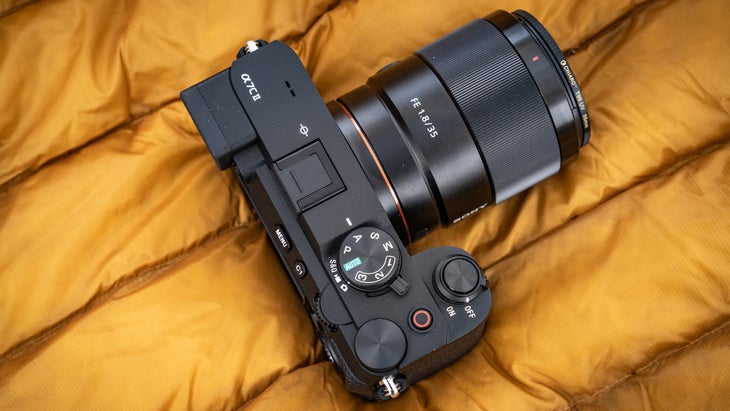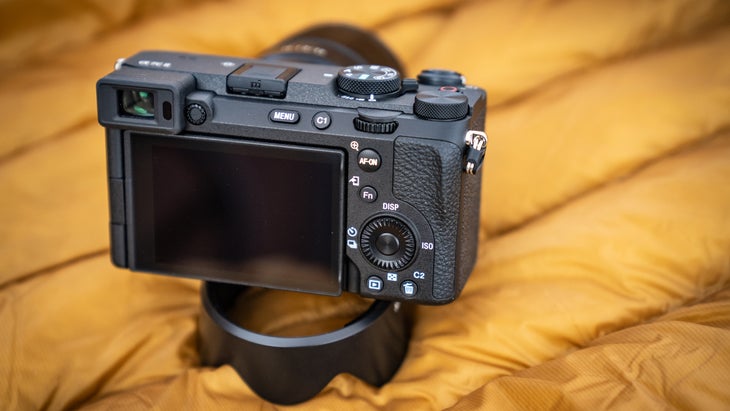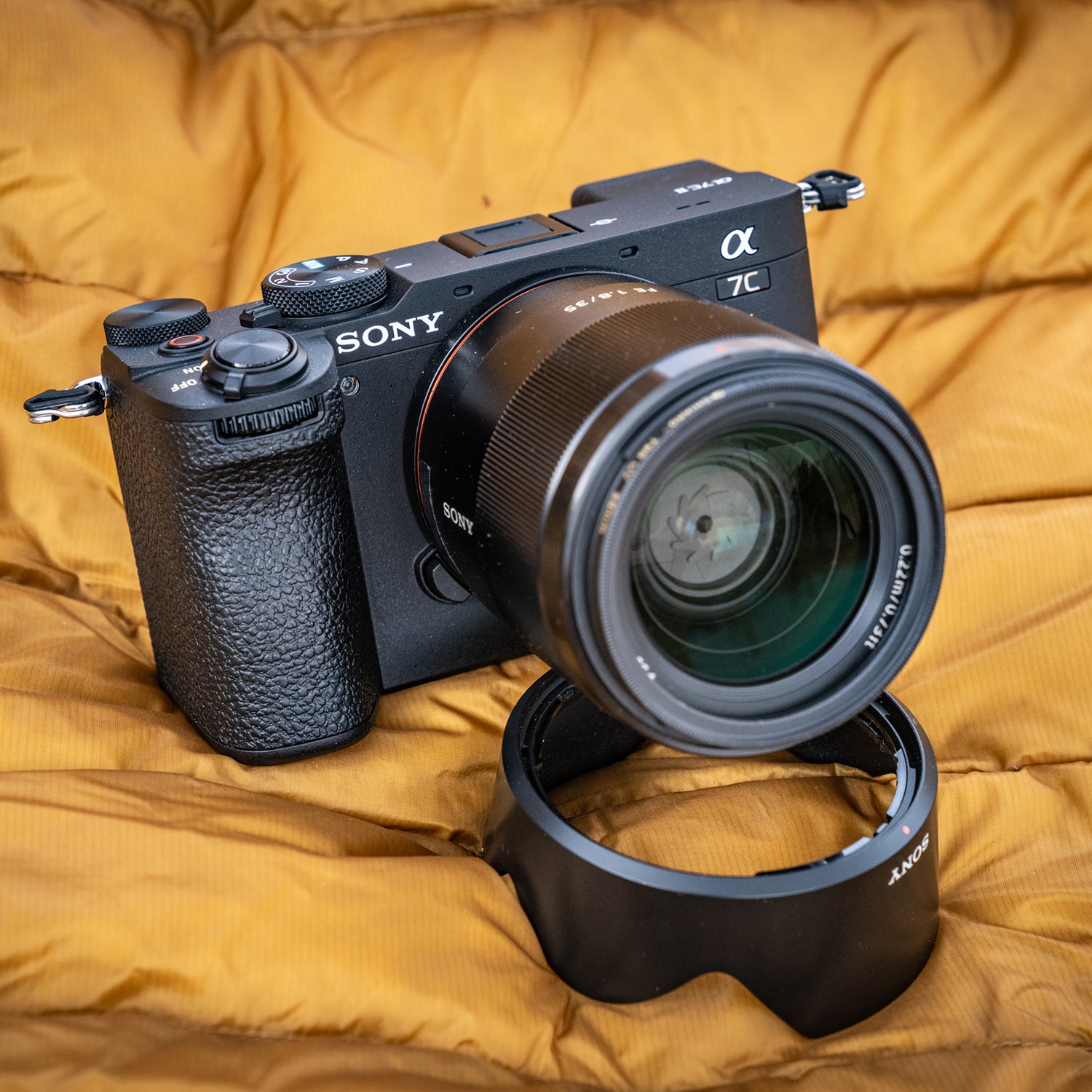When asked which camera takes the best photos, professional photographers like to quip that “the best camera is the one you have with you.” It’s a tongue-in-cheek way of saying that you should never worry too much about your gear. Use whatever you have, then do the work to find, frame, and capture a high-quality photo. The photographer matters more than the camera.
That mantra has become easier to follow now that we all have high-powered cameras in our pockets thanks to companies like Apple, Google, and Samsung. I’ve been blown away by the camera in the new iPhone 15 and think that we’ve finally reached a point where camera phones can produce images that we’d be happy to print and hang on our wall (a true test of image quality).
That said, I’ll eat my hat if Apple ever finds a way to make an iPhone that’s just as good, in every way, as a pro-level digital camera. Because phones are designed to be more than just cameras, they have to compromise, allowing companies like Sony, Nikon, Canon, Fuji, and Leica to still make a significantly superior product.
Case in point is the new . It’s smaller than a traditional mirrorless camera—it weighs just over a pound and is about as thick as three iPhones stacked together—playing on the trend that people want something that’s easy to travel with. Yet the small size doesn’t limit its functionality: You still get a giant full-frame sensor, advanced auto-focus, and interchangeable lenses, making it a pro-level option that’s significantly better than any current phone, or any phone we’ll likely see in the next five years.
See how it stacks up against our other favorite mirrorless cameras
Sony A7CII
Specifications
- Price: $2,198
- ISO range: 50-204800
- Weight: 15.1 oz (body only)
- Size: 4.9 x 2.8 x 2.5 inches
- Sensor: 33-megapixel full-frame Exmor R back-illuminated CMOS
Pros and Cons
⊕ Small and light
⊕ Comes with a full-frame sensor that performs well in low light
⊕ Works with all of Sony’s high-quality E-mount lenses
⊕ Fairly priced
⊗ No auto-focus joystick
⊗ Does not match ergonomically with Sony’s largest zoom lenses
All gear in this guide was tested by multiple reviewers. When you buy through our links, we may earn an affiliate commission. This supports our mission to get more people active and outside. Learn more.
Review: Sony A7CII Mirrorless Camera
After testing the A7CII alongside many other newly-released full-frame digital cameras, I think it’s the best camera on the market for those of us who like to adventure. Weight and size matter on an all-day hike, multi-day ski tour, or when you want to haul a camera along on a 100-mile road ride, and the A7CII is small and light enough to never really bog you down or get in the way.
The interchangeable lenses you can use on the A7CII add bulk and weight, but Sony makes two that are the perfect add-on. Less than three inches long and about the diameter of a paper-towel tube, they’re much smaller than most standard lenses but fast enough to capture great photos in low light, wide enough for landscapes yet not too wide for portraits, and built with high-quality glass to produce tack-sharp images when paired with the well-tuned sensor on the camera (more on that later).
Because the A7CII is a full-frame camera, it works with Sony’s entire line of E-mount lenses. If you’re a birder and want to save a little weight on the camera but still bring along a 70-200 millimeter f/2.8—or heck, even the new 300 millimeter f/2.8—you’d be more than happy with the image quality. The ergonomics of holding a big lens matched to a small camera are not ideal, but doable if that’s where you land.
The full-frame sensor on the A7CII captures 33-megapixel images that are plenty big and detailed enough to produce stunning prints or magazine covers, but not so big that you’ll fill up unnecessary space on your hard drive. Like all Sony full-frame sensors, this one offers a wide dynamic range, so you can always go into Adobe Lightroom and tone down the highlights and pull out the shadows to create a balanced image, even when you’re shooting in lousy light.
For travel and adventure photographers who are shooting on the go and almost never bring along any external lights, knowing that you’ll always get a usable—if not absolutely gorgeous—image takes away the stress and allows you to focus on your framing and the moment.

One big update on the A7CII is a front adjustment dial that sits just below the shutter button. It’s an important addition to the A7CII because that dial allows you to quickly and easily adjust your shutter or your aperture if you’re shooting in shutter or aperture priority mode. If you want to shoot manually, there’s another dial on the back of the camera where your thumb sits so you can control aperture and shutter speed at the same time.
The only ergonomic drawback, one that I admittedly had to get used to, is the lack of an autofocus joystick. On Sony’s larger cameras, like the A7RV, there’s a small joystick that sits in the upper righthand corner on the back of the camera which easily allows your thumb to move the spot focus point around. I love that joystick because I can quickly, with just a flick of my thumb, tell the camera exactly where to focus, be that in the middle of the frame, down at the bottom, or in an upper corner.

The workaround on the A7CII is to turn the rear dial into your joystick. Ergonomically, this works fine because it’s easy to press the dial up, down, or side to side to move the focus point. The downside to this is that it requires reprogramming the standard setting.
When you get the camera out of the box, the rear dial is set up to allow you to change your frame rate (how many photos the camera takes when you hold down the shutter) and ISO. If you reprogram the rear dial to act as your autofocus joystick, as I did, you lose the ability to change frame rate and ISO quickly. These features can be changed otherways, but it’s a little more difficult. Side note: the A7CII shoots up to ten frames per second, which is plenty for capturing high-octane action shots.
Some photographers will not turn the dial into the autofocus select mechanism because the A7CII has phenomenal autofocus tracking. You can tell the camera to latch onto a subject by aiming the focus on the human, animal, insect, or even a car or a plane you want to track, and then half-pressing the shutter. The camera then tracks that subject no matter where it moves in frame, negating the need to manually move your autofocus point.
This technology has gotten significantly better in the past few years and allows the photographer to track subjects in dynamic and fast-moving situations. To switch subjects, you just line up your focus point and half-press the shutter once again.
I’d recommend the A7CII primarily for shooting photos; but if you did want to shoot video, you get beautiful 4K footage and incredible image stabilization for handheld shooting.
The A7CII costs $2,200 and the 35 millimeter f1.8 lens adds another $748, which brings the total to just shy of $3,000 for the basic setup. That may seem high, but it’s in the ballpark for a pro-level, full-frame camera that has the chops to shoot everything from action to landscapes.
There are similar cameras out there that are small but mighty, but within that testing pool, the Sony still comes out on top. The Fuji X100V, which has a loyal following and a similar price point, does not have the same high-level functionality as the Sony, and the images are not as good, in my opinion. There are rumors about an that will improve that camera’s specs, but even that will likely still leave Fuji behind Sony in the rankings.
Leica also released the recently, which is just as compact and makes beautiful Leica-quality images. But that camera comes in at $6,000 with a lens. For Leica loyalists, that price tag might be easy to rationalize; but for others, it might be too hefty.


